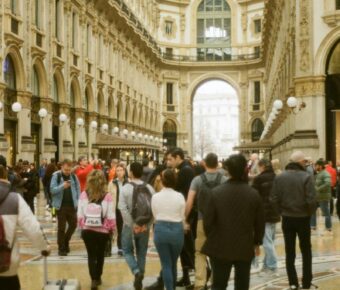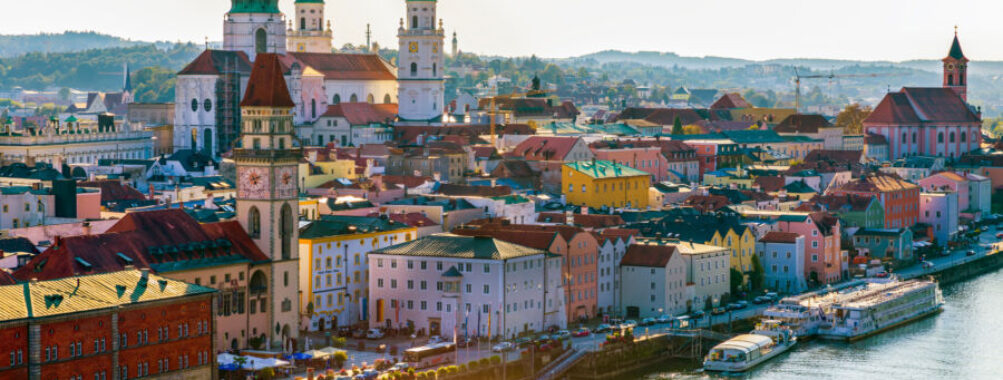
9 Unforgettable Passau Experiences: Explore Germany’s Three-River City
The morning light filters through St. Stephen’s Cathedral’s baroque windows as Europe’s largest cathedral organ begins to play. This is Passau at its most enchanting—a moment when centuries of history vibrate through the air in musical form. Known as the “City of Three Rivers,” where the Danube, Inn, and Ilz converge, this Bavarian gem offers far more than a picturesque stop on your European itinerary. Passau is a living museum where German history, legend, and culture blend seamlessly at the Austrian border.
Having explored this Bavarian gem during different seasons, I’ve discovered that Passau rewards those who venture beyond the standard tourist checklist. The city’s unique position at the German-Austrian border has shaped its identity as a cultural crossroads, creating a distinctive character you won’t find elsewhere in Germany.
Whether you’re drawn by the Richard Wagner connection, the spectacular baroque architecture, or simply the allure of discovering one of Bavaria’s oldest cities, this guide will take you through nine essential Passau experiences that connect you to Germany’s rich cultural tapestry. Each recommendation comes with practical insights to help you maximize your visit to this historic riverside treasure.
Contents
- 1. Experience Europe’s Largest Cathedral Organ at St. Stephen’s Cathedral
- 2. Discover Passau’s Baroque Renaissance: The Post-Fire Transformation
- 3. Witness the Unique Three-River Confluence in Passau’s Heart
- 4. Follow Richard Wagner and the Nibelungen Legends Through Historic Passau
- 5. Explore Passau’s Medieval Craftsmanship and “Passau Art” Legacy
- 6. Trace the Salt Trade Routes That Built Passau’s Wealth
- 7. Climb to Veste Oberhaus for Bavaria’s Best Fortress Views
- 8. Discover Passau’s 1,200-Year Religious Heritage
- 9. Experience the Unique German-Austrian Border Culture
- Plan Your Perfect Passau Visit
- Essential Trip Planning
- Where to Stay
- Conclusion: Passau as Germany’s Cultural Gateway
- Frequently Asked Questions About Visiting Passau
- What is Passau best known for?
- When is the best time to visit Passau?
- Can you see all of Passau in one day?
- Where is Passau located in Germany?
- How do I get to the Veste Oberhaus fortress?
- More Travel Guides
1. Experience Europe’s Largest Cathedral Organ at St. Stephen’s Cathedral

The crown jewel of Passau’s cultural offerings isn’t a museum or monument—it’s a sound. St. Stephen’s Cathedral houses an acoustic wonder: the world’s largest cathedral organ outside the United States. With an astounding 17,974 pipes, 233 stops, and four carillons, this magnificent instrument creates an auditory experience that cannot be replicated elsewhere.
What makes this organ truly unique is that all five separate parts can be played simultaneously from the main keyboard, creating a wall of sound that resonates throughout the cathedral’s ornate baroque interior. Combining the cathedral’s perfect acoustics and the organ’s extraordinary range produces what many music lovers describe as a transcendent experience.
Visitor’s Guide: St. Stephen’s Organ Concerts
- When to go: April-October on Monday-Saturday
- Best tip: Arrive 30 minutes early for optimal seating
- Where to sit: Central nave for balanced acoustics or near the altar for immersive sound
- Concert length: Typically 30 minutes
- What to expect: Classical works showcasing the organ’s remarkable range
2. Discover Passau’s Baroque Renaissance: The Post-Fire Transformation

When devastating fires swept through Passau in the 17th century, the city rose from the ashes with remarkable resilience and artistic vision. Today’s Old Town (Altstadt) is a testament to this rebirth, with its Italian-influenced baroque architecture creating one of Germany’s most visually cohesive historic centers.
St. Stephen’s Cathedral itself embodies this phoenix-like transformation. After the 1662 fire left only its late Gothic eastern façade standing, the cathedral was rebuilt between 1668 and 1693 by Italian architect Carlo Lurago. The interior features stunning stucco work by Giovanni Battista Carlone and frescoes by Carpoforo Tencalla, creating a space that exemplifies the baroque ideal of heavenly splendor made visible.
As you wander through Passau’s Old Town, notice how the entire district maintains this baroque character—from grand churches to patrician houses with their elegant arcades and colorful facades. Passau offers a remarkably consistent baroque aesthetic, unlike many German cities that showcase a patchwork of architectural styles from different eras.
Baroque Walking Tour Tips:
- Best time: Early morning when light enhances building colors
- Starting point: St. Stephen’s Cathedral
- Route: Cathedral → Residenzplatz → New Bishop’s Residence → riverfront
- Look for: Optical illusions and perspective tricks in building entrances
- Photography: Late afternoon golden light on the pastel facades
3. Witness the Unique Three-River Confluence in Passau’s Heart

Passau’s identity is inextricably linked to its rivers. The city’s strategic position at the confluence of the Danube, Inn, and Ilz Rivers not only shaped its historical importance but also created a fascinating natural phenomenon visible to this day: the meeting of three distinctly colored waterways.
The Danube flows with a deep blue-green tint, while the Inn carries a milky, jade-colored current from its alpine origins. Meanwhile, the smaller Ilz contributes a dark, almost black flow due to its draining natural moorlands. When these three rivers meet, their waters maintain their separate colors for a notable distance before finally blending—a striking visual that has amazed travelers for centuries.
This unique geographical feature made Passau a natural trading hub, particularly for the salt trade that brought wealth to the city during medieval times. The “white gold” was transported along these waterways, creating a powerful merchant class that shaped the city’s development.
Three-River Viewing Guide:
- Prime location: Dreiflüsse-Eck (Three Rivers Corner) near the peninsula tip
- Best viewpoint: Observation deck at Veste Oberhaus for panoramic perspective
- Optimal timing: Morning light for clearest color differentiation
- Photography tip: Use a wide-angle lens to capture all three rivers in one frame
- Historical context: Look for former salt storage buildings along the riverfront
See Related: Best Places to Visit in Europe This Year
4. Follow Richard Wagner and the Nibelungen Legends Through Historic Passau

Few visitors realize Passau has deep connections to one of Germany’s most significant cultural contributions: the Nibelungenlied and Richard Wagner’s epic opera cycle Der Ring des Nibelungen (The Ring of the Nibelung). This medieval epic poem, with its tales of heroes, dragons, and treasure, forms a central element of German national identity—and Passau plays a role in its origin and artistic legacy.
The author of the Nibelungenlied is believed to have lived in Passau, with geographical knowledge of the area evident throughout the text. The epic tells the dramatic story of the Burgundian court (called Nibelung) and its defeat by Attila the Hun. Within this sweeping narrative is the hero Siegfried, who becomes invincible by bathing in dragon’s blood yet remains vulnerable at a spot on his back where a linden leaf fell.
Inspired by these legends, Richard Wagner transformed them into his monumental Ring cycle. Interestingly, Wagner’s opera The Master Singers of Nuremberg connects to Passau—an unusual choice for the composer, whose works typically unfold in mythological rather than geographical settings.
Wagner Cultural Trail:
- Start at: The Museum of Modern Art (Museum Moderner Kunst) for exhibitions on Wagner’s influence
- Visit: City Archives (Stadtarchiv) for documents from Wagner’s time in the region
- Experience: Chamber music performances at Heilig-Geist-Stiftsschenke tavern
- Read: Historical markers throughout the city referencing the Nibelungen legends
- Listen: Download Wagner audio excerpts to play while visiting significant sites
5. Explore Passau’s Medieval Craftsmanship and “Passau Art” Legacy
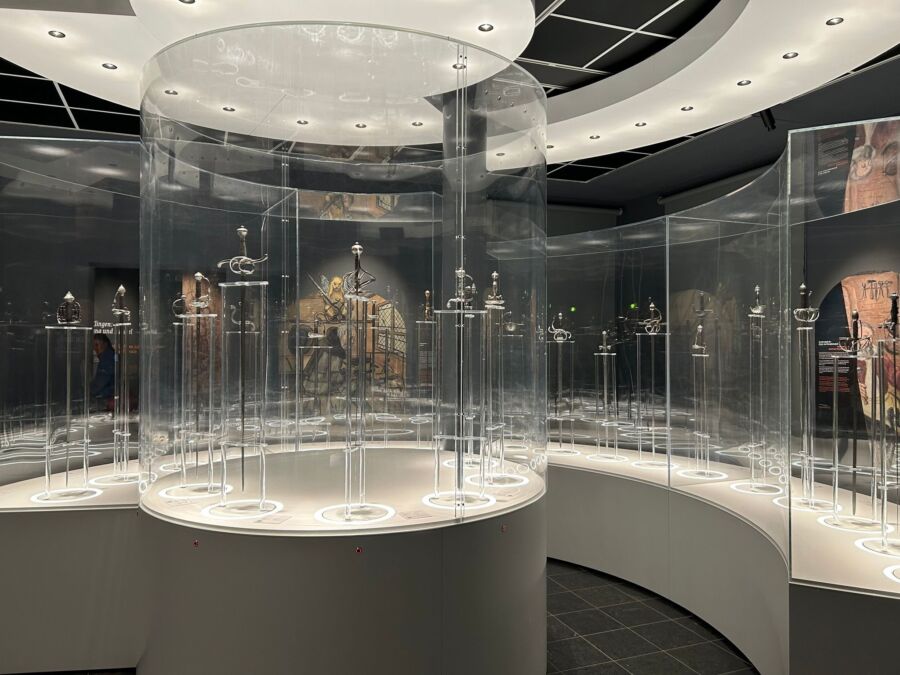
Passau was renowned for exceptional craftsmanship during the Renaissance, particularly in weaponry. Local smiths created high-quality knife and sword blades stamped with the Passau wolf, a mark synonymous with superior quality. Warriors believed these blades granted supernatural protection—a superstition so powerful that placing protective charms on blades became known as “Passau art.”
This tradition reflects the city’s position as a religious center (as the seat of the powerful Prince-Bishops) and a practical trading hub where craftsmanship flourished. The intersection of spiritual and practical concerns created a unique culture where artistry and functionality were highly valued.
Artisan Exploration:
- Must-visit: Klingen Museum for historic blades and Passau wolf mark history
- Hands-on experience: Blade-making demonstrations in Altstadt workshops
- Authentic souvenirs: Modern pieces incorporating traditional Passau patterns
- Special events: Seasonal craft markets featuring local artisans
- Historical context: Maps showing trade routes that spread Passau craftsmanship
6. Trace the Salt Trade Routes That Built Passau’s Wealth

In medieval times, Passau became an important center for the salt trade. The “white gold” was transported from the Alpine salt mines to Passau to be processed by local entrepreneurs. These merchants established a powerful monopoly until 1707, when all salt imports to Passau were forbidden, dramatically shifting the city’s economic landscape.
The salt trade shaped Passau’s economy, architecture, and social structure. Wealthy salt merchants built impressive townhouses that still line the riverbanks, and their influence extended to patronage of the arts and churches that gave the city a distinctive character.
Salt Trade Journey:
- Follow: The Salt Trail (Salzweg) is marked by bronze plaques on the pavement
- Begin at: The Salt Storage Building (Salzstadel) near the riverfront
- Explore: Narrow passages between historic merchant houses
- Visit: The Museum in Fortress Oberhaus for salt transportation exhibits
- Taste history: Sample salt-cured specialties at Alte Metzgerei restaurant
7. Climb to Veste Oberhaus for Bavaria’s Best Fortress Views

Perched atop a wooded bluff on the far bank of the Danube, the imposing Veste Oberhaus has watched over Passau since the 13th century. This massive fortress complex served as both protection for the city and a physical manifestation of the Prince-Bishops’ power—a reminder to citizens that their spiritual leaders also wielded considerable earthly authority.
Built-in 1219, the fortress has withstood numerous sieges and political upheavals, gradually expanding into the sprawling structure visible today. Its strategic position offers visitors a journey through medieval military architecture and spectacular panoramic views of the city and the three rivers’ confluence.
Fortress Visit Strategy:
- Authentic approach: Climb the pilgrim’s path (Pilgerweg) instead of taking the shuttle bus
- Walking time: 20 minutes of moderate uphill hiking
- Optimal timing: Late afternoon for golden light across the Old Town
- Must-see: Museum of Passau History inside the fortress walls
- Best viewpoint: The highest observation platform for the definitive three-river view
See Related: Little-Known European Cities to Explore Before They Become Too Popular
8. Discover Passau’s 1,200-Year Religious Heritage
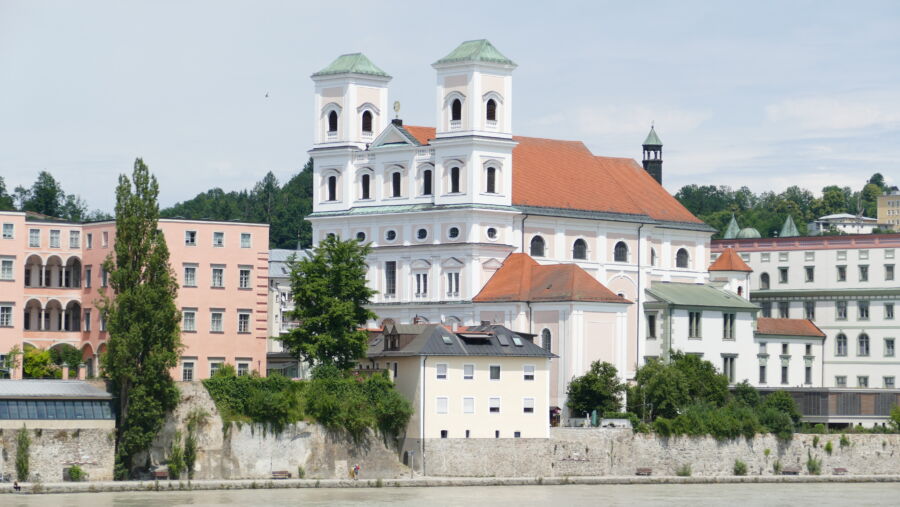
As the seat of a powerful diocese, Passau’s religious significance has shaped its development for over 1,200 years. In 739, an English Celtic monk founded the diocese of Passau, which became the Holy Roman Empire’s largest for many years. This religious authority influenced everything from architecture to daily life, creating a devout culture that valued spiritual devotion and artistic beauty.
This heritage is evident throughout the city, from the magnificent St. Stephen’s Cathedral to the numerous churches, monasteries, and religious buildings punctuating the cityscape. Each tells part of Passau’s story as a center of Catholic influence in Central Europe.
Sacred Sites Tour:
- Begin at: St. Stephen’s Cathedral, Germany’s first fully baroque cathedral north of the Alps
- Visit: Monastery of Niedernburg (8th century) with Queen Gisela’s tomb
- Explore: Diocesan Museum (Diözesanmuseum) for religious art and artifacts
- End at: Church of St. Michael to participate in a 12th-century candle-lighting tradition
- Special access: Inquire at the tourist office about visiting normally closed religious sites
9. Experience the Unique German-Austrian Border Culture

Passau stands at a significant cultural crossroads where Germany meets Austria. This border position has created a distinctive blended culture incorporating elements from both nations while maintaining its unique character. The city is a perfect introduction to regional rather than national identity, which remains important throughout Central Europe.
The border influence appears from the local dialect (which incorporates Austrian expressions) to the culinary traditions that blend Bavarian heartiness with Austrian refinement. Even the architecture shows this dual heritage, with Italian baroque influences coming from Austria rather than directly from Italy.
Border Culture Experience:
- Visit: Documentation Center of Everyday Culture to understand border region life
- Taste: Border cuisine at Wirtshaus Bayerischer Löwe with both German and Austrian dishes
- See: Official border marker where you can stand in two countries simultaneously
- Listen for: Distinctive Passau dialect with Austrian influences
- Shop: Regional products that blend German and Austrian traditions
Plan Your Perfect Passau Visit
Essential Trip Planning

| Category | Details |
|---|---|
| Recommended Stay | Minimum 2 full days |
| Best Season | April-October (organ concerts active) |
| Transportation | Pedestrian-friendly Old Town; fortress shuttle available |
| Footwear | Comfortable shoes for cobblestone streets |
| Language | German with Austrian influences; basic phrases helpful |
Where to Stay
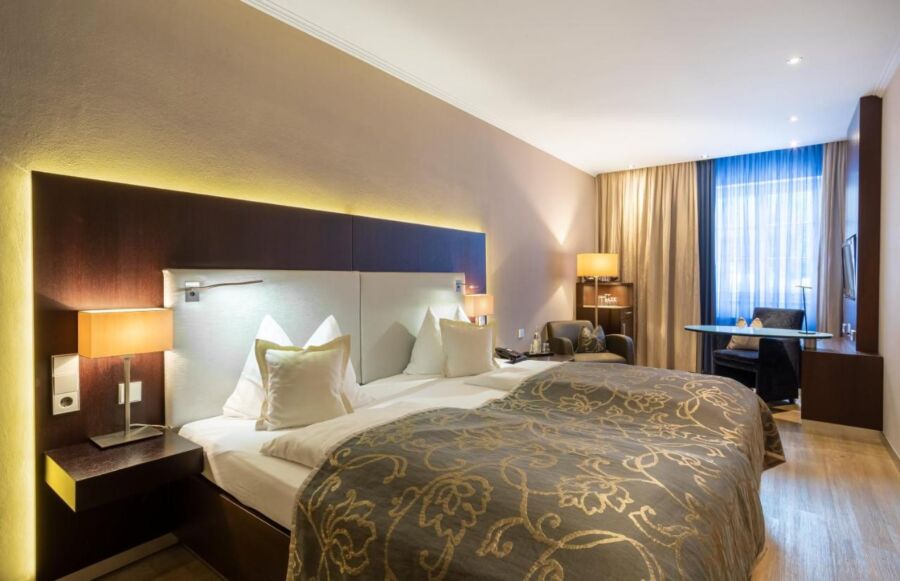
For the most authentic experience, book accommodations in Passau’s Altstadt (Old Town):
- Hotel Wilder Mann – Historic baroque building with river views
- Hotel Residenz Passau – Central location in a historic building
Conclusion: Passau as Germany’s Cultural Gateway

Passau offers more than beautiful rivers and baroque architecture—it provides a gateway to understanding German cultural identity. From the Nibelungen legends that helped shape the national consciousness to the religious heritage that influenced centuries of history, Passau encapsulates elements of German culture in a compact, accessible setting.
As you stand at the confluence of three rivers, you’re also at the confluence of history, legend, and living tradition. By exploring Passau with cultural curiosity, you’ll gain insights that enhance your understanding of Germany far beyond this single city.
Whether you’re tracing Wagner’s inspirations, experiencing Europe’s largest cathedral organ, or simply enjoying the unique atmosphere of this river city, Passau rewards those who look beyond the surface. Like the three rivers that define it, Passau brings together distinct cultural currents to create something uniquely valuable—a true German treasure at the nation’s edge, where borders separate and unite.
See Related: Affordable Places to Retire in Europe (You’ve Never Thought About!)
Frequently Asked Questions About Visiting Passau

What is Passau best known for?
Passau is best known as the “City of Three Rivers,” where the Danube, Inn, and Ilz converge. The city is famous for St. Stephen’s Cathedral, Europe’s largest cathedral organ, its stunning baroque architecture, which was rebuilt after the 17th-century fire, and its position at the German-Austrian border.
When is the best time to visit Passau?
The best time to visit Passau is between April and October when the weather is pleasant, and the famous organ concerts at St. Stephen’s Cathedral are in full swing. Spring and early autumn typically have fewer crowds than the peak summer months.
Can you see all of Passau in one day?
While you can see the major highlights in one day, Passau rewards visitors who stay at least two full days. This allows time to experience an organ concert, explore the fortress across the river, and fully appreciate the city’s cultural and historical offerings without rushing.
Where is Passau located in Germany?
Passau is located in southeastern Bavaria at the German-Austrian border, approximately 196 km (122 miles) east of Munich and 30 km (19 miles) from the Austrian border. The city sits at the confluence of three rivers: the Danube, Inn, and Ilz.
How do I get to the Veste Oberhaus fortress?
You can reach Veste Oberhaus by climbing the pilgrim’s path (Pilgerweg) for a 20-minute walk up the hillside or by taking the fortress shuttle bus that departs regularly from the Old Town. The fortress offers the best panoramic views of Passau and the three rivers.
Planning your next German adventure? Consider exploring the Romantic Road from Würzburg to Füssen, or discover another border city with a rich cultural history in Görlitz, where Germany meets Poland with equally fascinating results.
